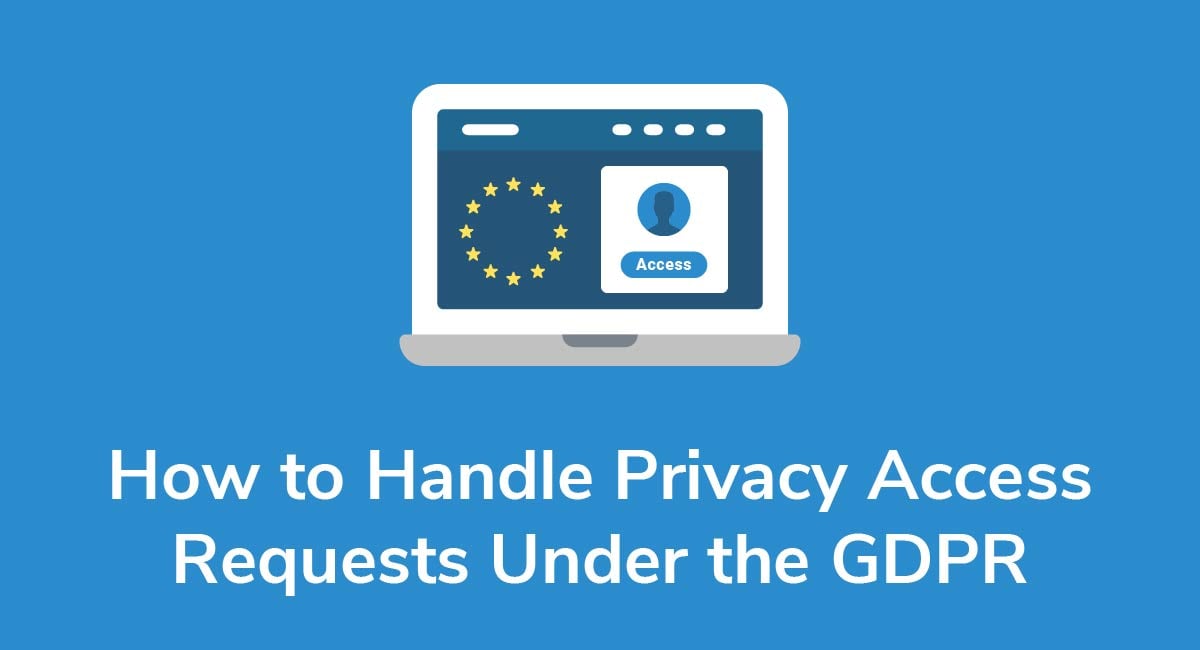Disclaimers for YouTube Videos
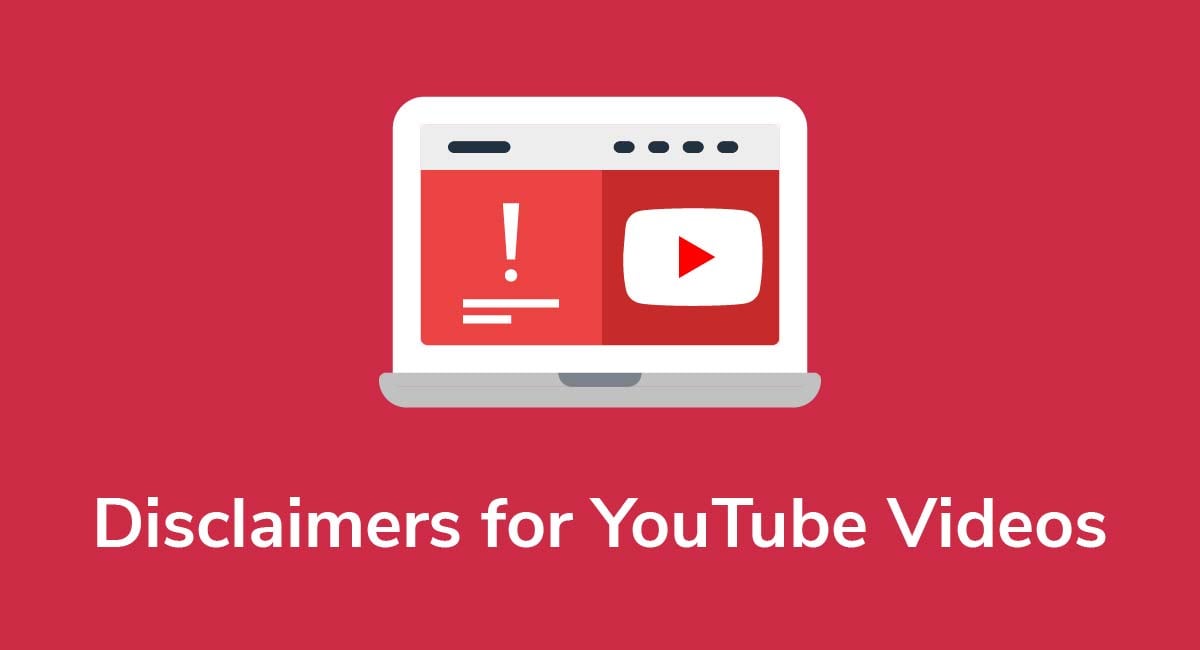
Disclaimers for YouTube videos are a way to tell your viewers about important things, while also limiting your legal liability for the video's content.
If you're a content creator on YouTube, it's important that you include a disclaimer with each video you upload. There are various types of disclaimers you might use, and what's appropriate will depend upon the video's content and its intended purpose.
Below, we'll explore how disclaimers work, why they're beneficial, and how you can draft your own legal disclaimers for YouTube videos.
Get compliant today with PrivacyPolicies.com
Select one of our generators to create the required legal agreements for your business:
- Our Privacy Policy Generator can help you generate a customized Privacy Policy in around three minutes, for free.
- Our Terms & Conditions Generator can help you generate a customized Terms & Conditions agreement in around three minutes, for free.
- Our EULA Generator can create a customized End-User License Agreement for your mobile or desktop app.
- Our Cookies Policy Generator can create a customized Cookies Policy to help your compliance with ePrivacy Directive and GDPR.
- Our Disclaimer Generator can create a disclaimer or disclosure for your website.
- Our Return & Refund Policy Generator can help your ecommerce store by creating a returns or refunds policy.
Integrate a free Cookies Notice and Cookie Consent banner to comply with the EU ePrivacy Directive and the new GDPR law regarding cookies.
- 1. What are Disclaimers?
- 2. Why Have a YouTube Disclaimer?
- 3. Are Disclaimers Legally Required?
- 4. Are Disclaimers Legally Binding?
- 5. The Main Types of Disclaimers for YouTube Videos
- 6. How Do You Draft a YouTube Disclaimer?
- 6.1. 1. Copyright Disclaimers
- 6.2. 2. Fair Use Disclaimers
- 6.3. 3. Affiliate Links Disclaimers
- 6.4. 4. Medical Disclaimers
- 6.5. 5. Advice Disclaimers
- 6.6. 6. Views Expressed Disclaimers
- 7. Where Do I Display My YouTube Disclaimers?
- 7.1. Video Description Box
- 7.2. YouTube Channel "About" Section
- 7.3. Terms and Conditions Agreement
- 7.4. Verbal Disclaimers
- 8. Summary
What are Disclaimers?
Disclaimers are statements you can use to limit your liability for anything that might go wrong when someone accesses or views your content. You're disclosing where your various legal obligations to your audience ends, and what risks they're assuming if they interact with your content in any way.
In a YouTube context, disclaimers can be used to remind individuals that you are not responsible for any action they might take as a result of watching your videos.
For example, here's a disclaimer from a video by SpineCare Decompression and Chiropractic Center:
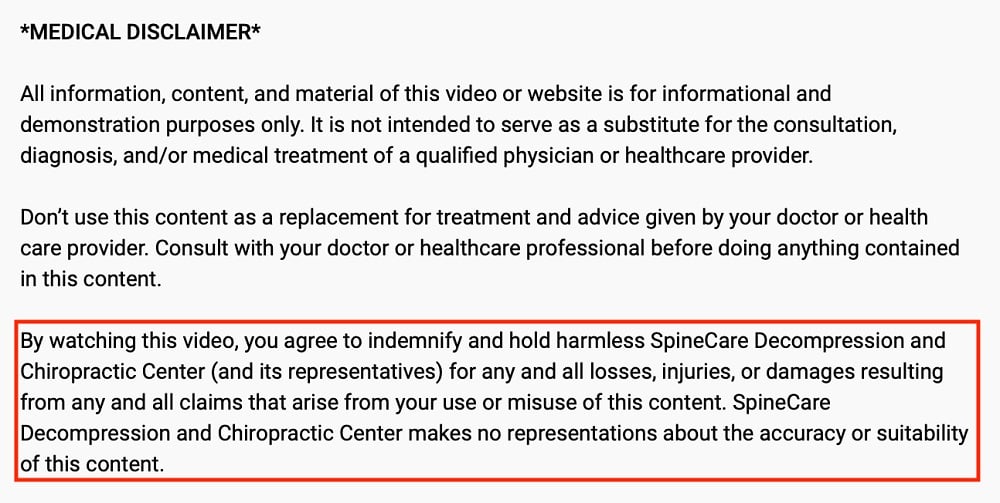
Disclaimers, when used correctly, ensure that your viewers understand their obligations to your business. By watching your content, viewers agree that they won't hold you responsible for certain harms they might suffer as a result of relying on the information you give them.
Why Have a YouTube Disclaimer?

There are three major benefits to including disclaimers with your YouTube videos:
- With a disclaimer, you can protect yourself from bias or impartiality allegations since you can disclose when your opinion may be influenced by your personal or professional relationships.
- Disclaimers can be used to shield your content from copyright infringement if you make it clear that no one can use your content without permission.
- You can use disclaimers to limit your liability in the event that someone is harmed or loses money after relying on your content.
When used properly, disclaimers can help to build viewers' trust in your content, and they can protect you from a variety of potentially costly lawsuits.
Are Disclaimers Legally Required?
In many circumstances, disclaimers are not legally required, although they're strongly recommended. Sometimes, however, under the Federal Trade Commission (FTC) rules, you are legally required to provide disclaimers:
- If you're affiliated with any business, you must disclose your relationship with the company when advertising for the business. Even if you don't earn money (for example, if they send you free products) you must still disclose your affiliation.
- If you earn a commission from any product you sell through your YouTube video, or if you earn revenue when users click on ad links, this commercial relationship must be disclosed.
Are Disclaimers Legally Binding?
They can be, but only if they're reasonable. For example, you can't use a YouTube disclaimer to deprive viewers of basic legal rights they have in whichever country they're in. The disclaimers must also be clearly visible so that viewers have a fair chance to read them before watching your content.
The Main Types of Disclaimers for YouTube Videos

There are six types of disclaimers that YouTubers should be aware of:
- Copyright disclaimers: A copyright disclaimer confirms that your content is copyright-protected.
- Fair use disclaimers: "Fair use" permits others to use copyrighted material without express permission in certain circumstances, so you might use this disclaimer if the fair use doctrine applies.
- Affiliate link disclaimers: This type of disclaimer informs your audience that you have a commercial relationship with a brand advertised in your video.
- Medical disclaimers: A medical or fitness disclaimer reminds individuals not to take information provided in your content as medical advice.
- Advice disclaimers: These disclaimers remind viewers not to use your content to make significant decisions, or to copy high-risk activities you demonstrate.
- Employee disclaimers: An employee disclaimer confirms that the content contains your opinion, which may not be the same as your employer's opinion.
Now we'll cover how to draft each of these types of disclaimers in more detail.
How Do You Draft a YouTube Disclaimer?

How you draft a disclaimer depends on which type of disclaimer you're writing, so let's look through some examples.
1. Copyright Disclaimers
Copyright laws protect original content from the moment of creation, so copyright disclaimers aren't technically required. However, assume that your audience may not be familiar with copyright law and include a disclaimer.
These disclaimers are often nothing more than a copyright symbol, the brand name, and a statement along the lines of "all rights reserved."
Here's an example from Spotify:
![]()
2. Fair Use Disclaimers
The "fair use doctrine" lets you publish some copyrighted content without permission if you don't intend to profit from it and you use it transformatively, meaning you use it for a new purpose or you make adaptations. Your Fair Use disclaimer discloses all of this.
If you're using content in this way, include a disclaimer telling viewers that the fair use doctrine applies.
Here's an example from Ellie Talks Money. As she may use copyrighted content to inform and educate her audience, she has a short disclaimer explaining that no copyright violations are intended:

So long as your use falls within the scope of the doctrine, all you need are a few lines explaining where the doctrine comes from (the Copyright Act), what the fair use exception is, and why your usage falls within the legal exception.
3. Affiliate Links Disclaimers
As mentioned earlier, you are required by law to have affiliate disclaimers if you're affiliated with a brand and there's a chance you may be accused of impartiality or bias if you promote their products or company.
For example, if you receive a commission when viewers shop through your links, disclose this in your video description, like Kendra and Kathryn Kane:

Since The DIY Nuts is an Amazon Affiliate, it has a special disclaimer disclosing its relationship with Amazon and the commission it might receive:

If a company sends you a product to review, you can disclose this as part of the video. For example, you can thank the company for supplying the product before you review it so that viewers know your opinion may be biased and that you didn't purchase the item.
4. Medical Disclaimers
If your video contains any content which could be construed as medical or health advice, include a disclaimer stating that:
- The content on your website is for information purposes only
- Your content is no substitute for medical advice
- Users rely on the information at their own risk
Here's a good example from YouTube channel Precision Movement. It advises people to consult their own doctor if they need health advice because the content is generalized and shouldn't be relied on for diagnostic purposes:

If you're creating health or fitness content but have no specific qualifications e.g. you're not a doctor, disclose this, too.
Here's what you'll find below Kathryn and Kendra Kane's affiliate disclaimer we looked at above:

You don't need a long disclaimer. Just make sure it's clear and serves to limit your liability.
5. Advice Disclaimers
If there's any chance that someone could make a financial or legal decision based on your content, you need an advice disclaimer. This disclaimer states that your content is not to be taken as professional advice.
It's not only law and investment firms who benefit from these disclaimers, though. For example, even if you're just a casual investor and you're sharing some tips online, there's a chance that someone will act on your suggestions and potentially lose money. Include an advice disclaimer if there's any possibility that someone could be harmed, end up in debt, or lose something as the result of following your advice.
Here's an example from investor Nate O'Brien. He makes it clear that he is not a financial advisor and that it's the individual's responsibility to decide which investment decisions they should make:
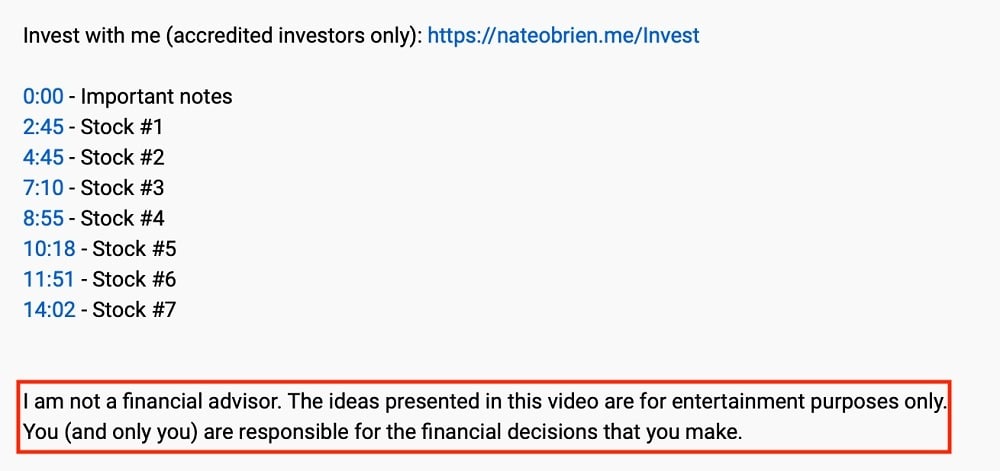
And influencer Ellie Talks Money clearly explains, before her "fair use disclaimer," that she can't accept liability for any loss someone incurs due to following her suggestions:

6. Views Expressed Disclaimers
A views expressed disclaimer tells your audience that the opinions expressed in the video belong to you, not your employer or any other organization you're affiliated with.
You might use such a disclaimer if you work in a certain niche and you're now creating a YouTube video on a related topic. Or, you might use it if you allow your employees to upload videos discussing topics such as news and current events.
These types of disclaimers need only be a sentence or two.
Here's an example from Bond, Schoeneck & King PLLC. It's short but it clearly explains that the speakers' opinions do not necessarily reflect the firm's own views:

While there are other disclaimers that your YouTube channel could potentially benefit from, these are some of the most commonly used ones.
After you have your disclaimers, the next thing to do is make sure they're adequately displayed.
Where Do I Display My YouTube Disclaimers?

Your YouTube disclaimer should be displayed prominently so that your audience can view it before watching your content. The three best places to display your disclaimer are within the video description box, your YouTube channel profile, and your website Terms and Conditions. You can also verbally speak your disclaimer within your video content, but this is best combined with one of the other three methods.
Video Description Box
You can use your video description box to tell viewers what your video is about, which makes it an ideal place to put a YouTube disclaimer.
Here's an example from a video by Dr. Jon Saunders. Underneath the video description, he has a short disclaimer reminding people that the exercises shown may not be suitable for everyone:
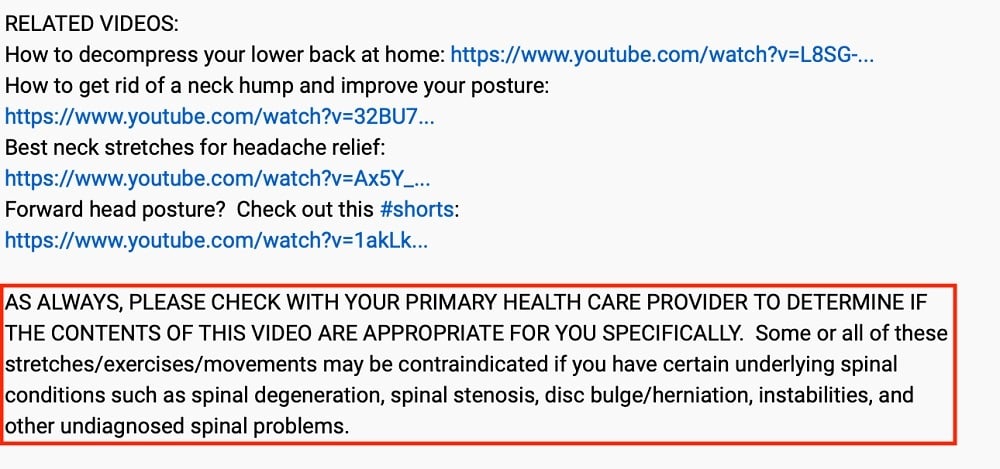
As in this example, use capital letters or bold text to draw attention to a disclaimer within your video description box.
YouTube Channel "About" Section
Every YouTube channel has an "About" section where you can tell viewers more about you or your company. You can include a disclaimer here so your audience can read it before deciding whether to watch any of your videos.
Activ Chiropractic, for example, uses this space to declare that its videos are for information purposes only and should not be relied upon over professional medical advice:
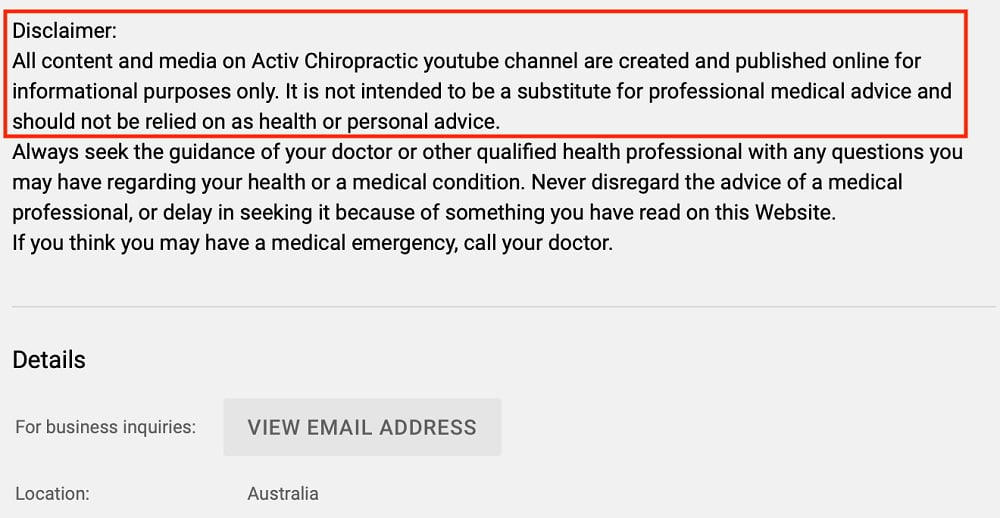
Choose the most relevant disclaimer for your business and include it within your YouTube profile.
Terms and Conditions Agreement
It's helpful to include disclaimers as part of your website's Terms and Conditions agreement (T&Cs), which you can link to in either your video description box or YouTube channel.
Here's an example from Kirkland & Ellis LLP. The disclaimer contains various clauses, including a section reminding people that the information provided is not legal advice and that all readers should seek legal counsel before acting on the content:

If you have a disclaimer like this, you can link to it within your YouTube profile or a video description box to provide your audience with more information regarding your policies.
Verbal Disclaimers
Remember you can also include a verbal disclaimer within your video (ideally at the start). Verbal disclaimers, such as "if you buy something through my link, I earn a small commission from it" give viewers the information they need to make informed decisions regarding your content.
Summary
YouTube disclaimers allow content creators to be transparent with their audience and help them to limit their legal liability if things go wrong after someone views their content.
If you're a professional, and there's a chance that someone may injure themselves or make unsound financial or legal choices after viewing your content, you should use a disclaimer.
Anyone showing high-risk activities for entertainment purposes should include a disclaimer reminding others not to try the activity at home.
Use a disclaimer if you want to rely on the "fair use" doctrine, but make sure you're actually protected by the doctrine before using it.
And don't forget, disclaimers are legally required for affiliate marketing or if you have any pre-existing relationship with a business you're advertising (however subtly) in your video.
Here are some tips for writing and displaying your disclaimer:
- Use clear, succinct, and simple language which the average reader can understand.
- Display your disclaimer prominently, such as in the video description box.
- Verbally state your disclaimer as an additional protection so that those who don't (or can't) read your description box are aware of the terms.
- Consider including links to your other policies, such as your website Terms and Conditions, if you think it might be helpful.

